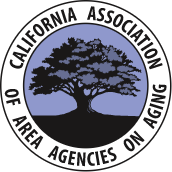
Description of Aging Services
C4A’s member Area Agencies on Aging (AAAs) help older adults and persons with disabilities live independently and safely and participate in their communities as they choose. This principle is called “community living” and is the foundation of the Older Americans Act (OAA) and the aging services the act advances. AAAs and their community partners serve older individuals who are “aging in place” as well as those living in long-term care settings such as assisted living communities, board and care homes, and skilled nursing facilities. Under the OAA’s framework, AAAs are charged with providing services in the following categories (Source: Overview of Older Americans Act Title III Programs):
- Supportive Services. Help to address functional limitations, maintain health and independence, and promote access to services. (Title IIIB).
- Nutrition Services. Primarily home-delivered and congregate meals that provide nutritious meals, support health and wellness, and address food insecurity. (Title IIIC)
- Evidenced-Based Health Promotion. Programs that help prevent and manage chronic health conditions. (Title IIID)
- Unpaid Family Caregiver Support. This program serves unpaid family caregivers, grandparents, and older individuals who are caregivers for a spouse or other relative. (Title IIIE)
- Elder Abuse Prevention. This program educates the public and professionals on how to prevent, recognize, and respond to elder abuse. (Title VII)
- Senior Community Service Employment Program (SCSEP). This program provides part-time, work-based training opportunities for older workers and assists program participants in obtaining unsubsidized employment. (Title V)
- Health Insurance Counseling and Advocacy Program (HICAP) This program provides free, unbiased counseling and advocacy to Medicare eligible individuals to help them understand health options and maximize benefits.
- Long-Term Care Ombudsman Program. This program is a resident-directed advocacy program that works to resolve problems related to the health, safety, welfare, and rights of individuals who live in long-term care (LTC) facilities such as nursing homes, board and care and assisted living facilities, and other residential care communities.
In addition, C4A’s members advance the California Master Plan for Aging (MPA) by implementing many actions in that plan’s “blueprint” on the local level. California AAAs innovate by providing additional services – many through strategic partnerships -- that complement those under the OAA, OCA, and MPA umbrellas and, as a result, help to address the needs of older adults, persons more fully with disabilities, and family caregivers throughout the state.
The Aging and Disability Resource Connection (ADRC) initiative is a strategic partnership between Independent Living Centers (ILC) and AAAs that act as a “No Wrong Door” system which enables people of all ages, incomes, and disability to access a wide array of Long-Term Services and Support options in their community. ADRCs provide enhanced information, referral, and awareness, short-term service coordination and options counseling.
Another principal example is the current growth in AAA contracting with health plans and systems to provide social services to enrollees, patients, and beneficiaries. Through such contracting, a truly integrated system of social and health care services can be realized.

